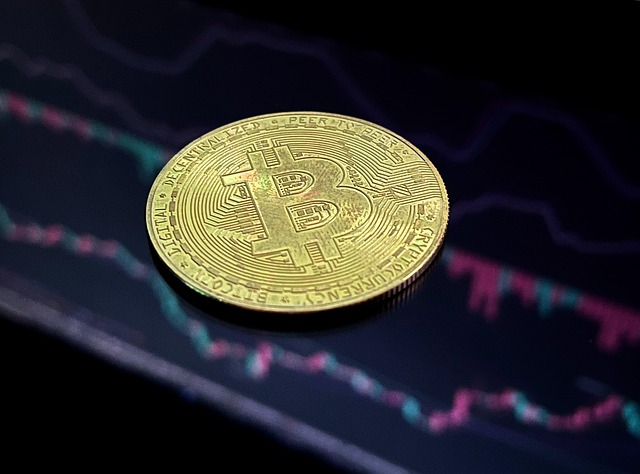UK trade bodies ask government to make crypto a ‘strategic priority’
Several British trade associations have asked Prime Minister Keir Starmer’s office to appoint a special envoy dedicated to crypto and for a dedicated action plan for digital assets and blockchain technology.In a March 31 letter, the coalition of six UK digital economy trade bodies urged Starmer’s special adviser on business and investment, Varun Chandra, for a “greater strategic focus and alignment to deliver investment, growth and jobs” for the crypto industry. The group, which consisted of the UK Cryptoasset Business Council, Global Digital Finance, The Payments Association, Digital Currencies Governance Group, the Crypto Council for Innovation and techUK, noted the US policy shift on crypto under President Donald Trump and his appointment of a crypto czar.Britain’s commitment to an economic trade deal focused on technological cooperation with the US “presents a significant opportunity to mirror the United States’ ambition in fostering leadership in blockchain, digital assets, and other emerging financial technologies,” the letter stated. The group recommended that the UK appoint a blockchain special envoy, similar to the US, to coordinate policy, foster innovation, and position the country competitively in global markets.The trade bodies also called for the development of a dedicated government action plan for crypto and blockchain technology, including a concierge service to attract high-potential firms.They added that the government should acknowledge and leverage the commonalities between blockchain, quantum computing and artificial intelligence technologies, including potential applications for government services.Another recommendation was to create a high-level industry-government-regulator engagement forum to ensure informed decision-making and cross-sector collaboration.The UK crypto and tech associations lobbying the government for a policy shift. Source: LinkedIn“With deep pools of talent, access to capital, world-class academic institutions, and sophisticated regulators, the UK provides an environment where digital assets and blockchain innovation can thrive,” they stated. Related: UK should tax crypto buyers to boost stock investing, economy, says bankerThe coalition argues that crypto and blockchain technology could boost the UK economy by 57 billion British pounds ($73.6 billion) over the next decade, with the sector potentially increasing global gross domestic product by 1.39 trillion pounds ($1.8 trillion) by 2030.Tom Griffiths, the co-founder and managing partner of crypto compliance advisory firm BitCompli, said in response to the letter on LinkedIn that the Financial Conduct Authority “has a lot of talent and a good sight of future plans, but the UK is definitely losing pace with Dubai, Singapore, and other EU jurisdictions.”“Now is the time for the FCA to act, or the UK will lose out on this huge opportunity, which is digital assets and all the benefits this sector can bring, not only now but over the next 20 years,” he added.Magazine: Bitcoin ATH sooner than expected? XRP may drop 40%, and more: Hodler’s Digest, March 23 – 29
Bitcoin traders are overstating the impact of the US-led tariff war on BTC price
Despite Bitcoin’s 2.2% gains on April 1, BTC (BTC) hasn’t traded above $89,000 since March 7. Even though the recent price weakness is often linked to the escalating US-led global trade war, several factors had already been weighing on investor sentiment long before President Donald Trump announced the tariffs.Some market participants claimed that Strategy’s $5.25 billion worth of Bitcoin purchases since February is the primary reason BTC has held above the $80,000 support. But, regardless of who has been buying, the reality is that Bitcoin was already showing limited upside before President Trump announced the 10% Chinese import tariffs on Jan. 21.Gold/USD (left) vs. Bitcoin/USD (right). Source: TradingView / CointelegraphThe S&P 500 index hit an all-time high on Feb. 19, exactly 30 days after the trade war began, while Bitcoin had repeatedly failed to hold above $100,000 for the previous three months. Although the trade war certainly affected investor risk appetite, strong evidence suggests Bitcoin’s price weakness started well before President Trump took office on Jan. 20.Spot Bitcoin ETFs inflows, strategic Bitcoin reserve expectations and inflationary trendsAnother data point that weakens the relation with tariffs is the spot Bitcoin exchange-traded funds (ETFs), which saw $2.75 billion in net inflows during the three weeks following Jan. 21. By Feb. 18, the US had announced plans to impose tariffs on imports from Canada and Mexico, while the European Union and China had already retaliated. In essence, institutional demand for Bitcoin persisted even as the trade war escalated.Part of Bitcoin traders’ disappointment after Jan. 21 stems from excessive expectations surrounding President Trump’s campaign promise of a “strategic national Bitcoin stockpile,” mentioned at the Bitcoin Conference in July 2024. As investors grew impatient, their frustration peaked when the actual executive order was issued on March 6.A key factor behind Bitcoin’s struggle to break above $89,000 is an inflationary trend, reflecting a relatively successful strategy by global central banks. In February, the US Personal Consumption Expenditures (PCE) Price Index rose 2.5% year-over-year, while the eurozone Consumer Price Index (CPI) increased by 2.2% in March.Investors turn more risk-averse following weak job market dataIn the second half of 2022, Bitcoin’s gains were driven by inflation soaring above 5%, suggesting that businesses and families turned to cryptocurrency as a hedge against monetary debasement. However, if inflation remains relatively under control in 2025, lower interest rates would favor real estate and stock markets more directly than Bitcoin, as reduced financing costs boost those sectors.US CPI inflation (left) vs. US 2-year Treasury yield (right). Source: TradingViewRelated: Coinbase sees worst quarter since FTX collapse amid industry bloodbathThe weakening job market also dampens traders’ demand for risk-on assets, including Bitcoin. In February, the US Labor Department reported job openings near a four-year low. Similarly, yields on the US 2-year Treasury fell to a six-month low, with investors accepting a modest 3.88% return for the safety of government-backed instruments. This data suggests a rising choice for risk aversion, which is unfavorable for Bitcoin.Ultimately, Bitcoin’s price weakness stems from investors’ unrealistic expectations of BTC acquisitions by the US Treasury, declining inflation supporting potential interest rate cuts, and a more risk-averse macroeconomic environment as investors turn to short-term government bonds. While the trade war has had negative effects, Bitcoin was already showing signs of weakness before it began.This article is for general information purposes and is not intended to be and should not be taken as legal or investment advice. The views, thoughts, and opinions expressed here are the author’s alone and do not necessarily reflect or represent the views and opinions of Cointelegraph.
Crypto ETP outflows, explained — What investors need to know
What are crypto ETP outflows? Crypto ETPs give exposure to digital assets via traditional financial instruments. When more money exits these products rather than entering them, it is known as an “outflow” rather than an “inflow” — i.e., more people are selling than buying. Crypto exchange-traded products (ETPs) hold crypto assets as their underlying commodity. The goal is for them to provide an exchange-traded investment for investors who want exposure to crypto without directly buying the digital assets. Many investors, particularly institutions, prefer this method, as it opens up crypto investing within traditional financial instruments. There is no need to venture into unregulated market areas or take responsibility for the security and safety of crypto assets. There are several types of crypto ETPs available, including exchange-traded funds (ETFs), exchange-traded commodities (ETCs) and exchange-traded notes (ETNs). Most famously, Bitcoin ETFs were approved and began trading in January 2024. These crypto ETPs are widely traded and often account for the majority of trading volumes — both inflows and outflows. If you’ve been following the price action of cryptocurrency like Bitcoin (BTC), then you’ll likely have seen stories about crypto ETP outflows. So, what are crypto ETP outflows? This occurs when money flows out of these investment products, indicating that the market is eager to sell off positions. The reasons for this can vary, including profit-taking, negative market sentiment or risk adjustment.Crypto ETP investment trendsThese crypto fund outflows can be large and drive serious volatility in the markets. For example, in March 2025, global crypto products shed $1.7 billion over the course of a week. This compounded outflow totals $6.4 billion in the trailing five weeks. During this time, 17 consecutive days of outflows were recorded, causing the longest streak since records began in 2015. As an investor, understanding ETP flow offers insight into institutional investor sentiment. This can often precede the wider market movements in the coming days and weeks. Outflows can signal warning signs of a changing market dynamic. In the case of record-breaking outflows, it could point to a shift in how institutional money is viewing risk within the crypto markets. Factors driving crypto ETP outflows ETP outflows are driven by a mix of factors, which include economic conditions, industry concerns, regulation, market cycles and more, that can be used to spot upcoming market moves. So, if ETP flows can be a useful way to gauge sentiment changes in the market, then it is critical to understand what drives these flows. Crypto markets are fickle and can move quickly on news cycles. Adding to this, there are several other common factors that correlate to driving ETP outflows:Macroeconomic headwinds: Economic uncertainty and bad news can lead to money flooding out of risky assets. This often includes US Federal Reserve policy concerns, inflation data and interest rate uncertainty. Security concerns: Hiccups within the industry can make investors nervous, especially during news of fraud and hacks such as the $1.5-billion Bybit hack in early 2025.Regulation development: Shifting government positions on crypto can lead to money flows. Particularly, anti-crypto political moves and taxation can spook ETP investors. Market cycles: After significant market gains, pullbacks start to occur as institutions enter a profit-taking phase to book in their profits. This selling action draws money out of the market. Institutional sentiment: Major financial institutions make up a significant chunk of the market. If they decide to reassess their crypto allocation, outflows can begin as strategies move to less risky assets. Technical indicators: Many investors watch technical indicators closely. If key support levels are broken on major cryptocurrencies, selling pressure intensifies quickly.Often, multiple factors, as explained above, can create a perfect storm for retreating investor sentiment and lead to an unprecedented scale of outflows. Understanding these factors can help you to spot the difference between normal volatility and fundamental market shifts. Impact of ETP outflows on crypto markets Crypto ETP outflows are signals of significant sentiment shifts, which in turn continue to put downward pricing pressure on crypto markets. Prolonged outflow streaks are cause for concern for crypto investors, as they indicate a critical shift in investor sentiment for cryptocurrency. Long streaks suggest that market conditions have become particularly challenging. Generally, outflows start with Bitcoin ETPs, as it is the most well-known and largest cryptocurrency. This can then spread to ETPs for other assets like Ether (ETH) before creating a loss of confidence in the whole crypto market. During these periods, you’ll quickly see direct price pressure on crypto assets trickle down the markets. During large ETP outflows, cryptocurrency experiences significant price corrections, which can hit 20% or more in a matter of weeks. Liquidity is also affected, with total assets under management (AUM) dropping by billions of dollars. With more sellers than buyers in the market, the reduced liquidity makes selling harder for many crypto assets, further adding to the downward price pressures. Market sentiment quickly becomes contagious as negativity spreads from institutions to retail investors. When this happens, even the strongest growth streaks can be terminated as excitable bull runs halt. ETP outflow indicators Knowing the key indicators can help provide early warning signals for investors looking to anticipate big market moves. The concentration of flows in specific products and understanding regional discrepancies can create targeted monitoring to spot investment opportunities. Indicators favored by investors include:Volume: Unusual spikes in ETP trading volumes usually precede large outflow events. Typically, this spike can signal something important about investor sentiment or market conditions. For instance, a large uptick in volume may indicate that investors are preparing for or responding to news, market movements or shifts in sentiment.Premium/discount shifts: Premiums and discounts refer to the difference between the price at which an ETP is trading in the market and its actual net asset value (NAV), which is the value of the assets held. Shifts in premium/discount can give insight into market sentiment or potential future price movements. For instance, if an ETP that usually trades at a premium suddenly starts trading at a discount, it could signal waning investor confidence in the underlying assets or broader market concerns.Leading product indicators: Leading product indicators are products or assets that tend to signal broader market trends. For example, a movement in the BlackRock iShares Bitcoin Trust (IBIT), a dominant Bitcoin ETF, can indicate growing institutional interest in Bitcoin, which may signal future market growth. These products often lead the way for similar assets or broader market sectors. The performance of industry-leading products is closely monitored by investors, as their price fluctuations can act as a barometer for upcoming trends in both crypto and traditional markets, helping predict broader market shifts.Institutional holdings reports: Institutional holdings refer to the positions held by large investment entities like mutual funds, pension funds and hedge funds. These firms often hold large quantities of assets or securities, and their decisions can have a significant impact on the market. A change in major institutional positions could indicate a shift in how these large players view the market or specific assets. For example, if a large institutional investor starts reducing its position in a particular stock or ETP, it might signal that the investor believes the asset’s price is going to decrease or that they are adjusting their portfolio based on broader economic factors.Flow momentum indicators: Flow momentum indicators track the rate at which capital flows in or out of a market or asset. An acceleration in outflows typically signals panic or growing market uncertainty as investors rush to withdraw funds. Conversely, the deceleration of outflows suggests a stabilization in sentiment, as fears may subside or investors look to reenter the market. Monitoring these indicators helps investors assess the intensity of market sentiment over short (days/weeks) and medium (months) terms, offering insights into whether the market is facing a temporary dip or a more prolonged downturn.Regional flow discrepancies: Regional flow discrepancies refer to the varying capital outflow patterns across different geographic regions. During market sell-offs, US-based investors often lead the way in pulling funds out of the market due to their significant market share and risk appetite. This can result in more substantial outflows in US markets compared to other regions. However, these discrepancies can also present opportunities for international investors, especially when one region shows resilience while others are panicking. Tracking regional trends is crucial for understanding the global dynamics that drive market movements and investor sentiment.Cross-asset correlations: Cross-asset correlations examine how different asset classes, like cryptocurrencies and traditional financial markets, move in relation to one another. Typically, high-risk assets like Bitcoin often show a correlation with tech stocks or other volatile assets. When traditional markets experience turbulence, such as a downturn in equities, crypto markets may also dip as investors seek safety. Conversely, during periods of growth in traditional markets, cryptocurrencies might see inflows as investors look for higher returns. Understanding these correlations enables investors to make more informed decisions by anticipating how crypto markets will react to broader economic conditions. Crypto ETP inflows and outflows: 2024–Q1 2025 trends and insights In 2024, crypto ETPs saw record inflows of $44.2 billion, led by Bitcoin and Ether products, despite minor year-end outflows. However, 2025 experienced a sharp reversal, with significant outflows starting in February, resulting in $2.55 billion in net inflows by March 10.Here are the key highlights of 2024–2025 crypto ETP flows:2024 net inflows: According to CoinShares, the total net inflows for 2024 reached $44.2 billion, a 320% increase from the previous record of $10.5 billion set in 2021.Bitcoin ETPs inflows: Bitcoin ETPs alone saw $38 billion in inflows, accounting for 29% of Bitcoin’s total AUM of $130 billion.Ether ETPs inflows: Ether-based ETPs also performed well, with late 2024 momentum pushing annual inflows to $4.8 billion, representing 26% of ETH’s $18.6 billion AUM.Minor outflows in 2024: Despite the overall positive net inflows, there were periods of outflows, notably in the last trading week of 2024, which saw $75 million in net outflows, as reported on Jan. 6, 2025.Overall positive net inflows in 2024: These outflows were minor compared to the year’s inflows, and overall, 2024 had no significant net outflows, with the net flow being positive at $44.2 billion.Strong start to 2025: The year 2025 started strongly, with the first three days of January 2025 seeing $585 million in inflows.2025 net inflows by Feb. 10: By Feb. 10, 2025, year-to-date net inflows reached $7.3 billion, with five consecutive weeks of inflows, including a notable week ending Feb. 10 with $1.3 billion in inflows, where Ether ETPs saw $793 million in inflows, outpacing Bitcoin.Reversal of inflows starting Feb. 17, 2025: However, there was a sharp reversal starting from the week ending Feb. 17, 2025, with the first significant weekly net outflows of $415 million, according to CoinShares.End of 19-week inflow streak: This marked the end of a 19-week inflow streak post-US election, amassing $29.4 billion, far surpassing the $16 billion in the first 19 weeks of US spot ETF launches in 2024.Continued outflows in late Feb. 2025: The outflows continued, with the week ending Feb. 24, 2025, seeing $508 million in Bitcoin outflows, and the week ending March 3, 2025, recording the largest weekly outflows on record at $2.9 billion, bringing the three-week total to $3.8 billion.March 2025 outflows: The week ending March 10, 2025, saw another $876 million in outflows, bringing the total outflows over these four weeks to $4.75 billion. Starting the week of March 17, cryptocurrency ETPs saw liquidations accelerate, with $1.7 billion in outflows recorded. This brought the total outflows over the past five weeks to $6.4 billion, according to CoinShares’ report. Crypto ETP inflows surge; AUM declines (as of March 31): Global crypto ETPs saw $226 million in inflows for the week ending March 30, following $644 million the week before. Despite this two-week positive trend after a five-week outflow streak, total AUM dropped below $134 million by March 28. Altcoins recorded $33 million in inflows after four weeks of outflows totaling $1.7 billion. Future of crypto ETPs Despite worryingly large outflow events in 2025, the continuing growth in new ETP varieties hitting the market indicates a continued financial interest in the space.Especially considering the longer-term growth trend of crypto AUM, the future of crypto ETPs as a strong investment vehicle and market driver is strong. Large outflows can be concerning for investors in the short term, but even severe pullbacks of 20%–30% can be recovered during a larger market cycle. In fact, many investors believe these pullbacks are healthy during periods of growth as investors take profits and consolidate market positions.Regulatory evolution appears positive, particularly in the US, with President Donald Trump being pro-crypto. He’s even signed executive orders to try and improve approaches to crypto regulation and form a Strategic Bitcoin Reserve and digital asset stockpile. New crypto ETPs are frequently being filed by financial institutions eager to broaden their offerings for investors. In addition to Bitcoin and Ether products, Solana and XRP ETPs have gained significant attention following their approval and launch. These new products have even seen inflows despite downturns in Bitcoin and Ether ETPs.As the crypto market continues to evolve, the launch of new ETPs is likely to drive further innovation and attract a broader range of investors. With increasing regulatory clarity and growing institutional interest, future offerings may expand to include other promising cryptocurrencies. As a result, you can expect continued diversification in the crypto ETP space, with potential for increased inflows and new market opportunities, even amid fluctuations in established assets like BTC and ETH.
Binance ends Tether USDT trading in Europe to comply with MiCA rules
Binance has discontinued spot trading pairs with Tether’s USDt in the European Economic Area (EEA) to comply with the Markets in Crypto-Assets Regulation (MiCA).Cryptocurrency exchange Binance has delisted spot trading pairs with several non-MiCA-compliant tokens in the EEA in line with a plan disclosed in early March, Cointelegraph has learned.While spot trading pairs in tokens such as USDt (USDT) are now delisted on Binance, users in the EEA can still custody the affected tokens and trade them in perpetual contracts.USDT is available for perpetual trading on Binance. Source: BinanceAccording to a previous announcement by Binance, the spot trading pairs for non-MiCA-compliant tokens were to be delisted by March 31, which is in line with a local requirement to delist such tokens by the end of the first quarter of 2025.Delistings on other exchanges in EEABinance is not the only crypto exchange delisting non-MiCA-compliant tokens for spot trading in the EEA.Other exchanges, such as Kraken, have delisted spot trading pairs in tokens such as USDT in the EEA after announcing plans in February.According to a notice on the Kraken website, the exchange restricted USDT for sell-only mode in the EEA on March 24. At the time of writing, the platform doesn’t allow its EEA users to buy the affected tokens.Kraken restricted USDT to sell-only mode in the EEA on March 24. Source: KrakenAmong other non-MiCA-compliant tokens, Binance has also delisted spot trading pairs for Dai (DAI), First Digital USD (FDUSD), TrueUSD (TUSD), Pax Dollar (USDP), Anchored Euro (AEUR), TerraUSD (UST), TerraClassicUSD (USTC) and PAX Gold (PAXG).Related: Tether acquires 30% stake in Italian media company Be WaterKraken’s delisting roadmap in the EEA only included five tokens: USDT, PayPal USD (PYUSD), Tether EURt (EURT), TrueUSD and TerraClassicUSD.ESMA doesn’t prohibit custody of non-MiCA-compliant tokensBinance and Kraken’s move to maintain custody services for non-MiCA-compliant tokens aligns with a previous communication from MiCA compliance supervisors.On March 5, a spokesperson for the ESMA told Cointelegraph that custody and transfer services for non-MiCA-compliant stablecoins do not violate the new European cryptocurrency laws. On the other hand, the same regulator previously advised European crypto asset service providers to halt all transactions involving the affected tokens after March 31, adding a certain extent of confusion over MiCA requirements.Magazine: How crypto laws are changing across the world in 2025
The future of digital self-governance: AI agents in crypto
Opinion by: Tomer Warschauer Nuni, chief marketing officer of Kima NetworkNo one should be surprised that the crypto space is actively discussing the new wave of enthusiasm around AI and its limitless uses. According to proponents, AI represents the most promising approach to enhancing blockchain technologies and decentralized applications, driving greater autonomy and efficiency across the ecosystem.The use of AI agents in crypto trading and interoperability between traditional finance (TradFi) and decentralized finance (DeFi) has been quite fruitful. They also help improve user experience within the ecosystem and play a key role in enhancing the scalability of blockchain networks as they grow.In December 2024, VanEck reported that AI agents were already numbering 10,000 and that they were expected to reach 1 million in 2025. This projected growth shows how seemingly inevitable this future is for believers and skeptics alike.The current state of AI agents in the digital world It is easy to see why everyone is excited about integrating AI agents into nearly every digital process. They enhance several processes with no or less effort from humans.Current challenges, however, including the ethical concerns identified by the Vatican, do not allow for their full adoption. Crypto investors also felt the heat after DeepSeek’s release, which led to a massive market loss. This risk-to-reward analysis may well be used to discuss the necessity of AI agents in the crypto industry.The market capitalization of AI agents in crypto rose 322% in the fourth quarter of 2024, from $4.8 billion to $15.5 billion, indicating that more people in the crypto community are accepting AI. The phenomenon of the absolute autonomy of systems is not so far away if we look at the advantages.AI agents’ trading, analysis and risk management capabilities are widely reported to be better than those of humans. Every decision made in the market is made quickly and is strongly supported by as much data as possible, reducing human errors that can cause losses. There are some good indications of this potential. Edwin is a project that aims to combine AI and decentralized finance, enabling the easy integration of AI agents built on top of frameworks like LangChain and ElizaOS to work with DeFi platforms, including Aave and Uniswap. This makes creating a single interface and securely performing blockchain operations easier, removing the need to learn different protocol integrations. Recent: Microsoft for Startups backed project: Web3 AI workforce on demandThis allows for a utopia of financial automation, or “DeFAI,” where AI agents can control their financial destiny and manage and control their assets in a highly complex, dynamic environment.For example, ElizaOS offers a robust multi-agent simulation environment to develop, deploy and manage many autonomous AI agents. It’s a versatile platform that enables these agents to move between various systems while preserving their identity and knowledge toward fully active and self-directed entities in the crypto realm.AI agents can combine all the functions of TradFi and DeFi without issue. They can cut out the intermediaries in international transactions, improving the speed of handling crypto and fiat financial transactions. They can also enable liquidity providers to manage their stablecoin yields completely automatedly and maximize their yields according to current demand across all blockchains. These integrations are an indication of the endless possibilities in cross-border payment transactions.In a September 2024 report, the Global Digital Visionaries Council predicted that by 2025, 20% of all financial transactions would be crosschain due to the integration of TradFi and DeFi systems. Projects like Virtuals Protocol go further by enabling users to create, own and deploy autonomous AI agents. Although the initial application of Virtuals Protocol is the creation of AI-driven avatars, the protocol offers resources that can be used for autonomous crypto trading, showing the versatility of AI in blockchain ecosystems.Autonomous market and personalization is also improving with the help of AI. Crypto’s first AI agents index, Cookie.fun — developed by Cookie DAO — provides real-time analysis of agents’ performance, mindshare and engagement across blockchains and social media. The platform lists their market caps and “smart following” to track market trends and provide vital information that investors and projects can use to make better decisions and identify the top-performing agents in the ecosystem.AlphaNeural provides a decentralized environment for the training, market share and effectiveness of AI models and agents. It also has a marketplace for AI assets and a GPU aggregation network that enables creators to tokenize their work and secure and scale the execution of AI solutions. In this manner, the current opportunities for developing advanced AI tools are open for everyone, which connects AI developers with the crypto ecosystem.The crypto analyst community is confident that AI technology can improve most blockchain performance metrics. The crypto ecosystem is also experiencing rapid user growth, which means that the level of personalization in customer interactions is also increasing due to the use of AI agents.The skeptic’s point of viewNevertheless, many still have different opinions regarding promoting digital autonomy in crypto through AI agents.One significant concern raised in a case study published by the Wharton School of the University of Pennsylvania is the potential effect on the stock market from the increased risk of market manipulation. In theory, collusion between trading algorithms powered by AI could lead to price inefficiencies that might weaken the efficiency of financial markets. In such cases, the bots could manipulate prices up or down or cause a price surge or crash, eroding the market’s credibility.Many people have also expressed concerns over relying on AI agents to make decisions because they are prone to hacking. Poorly programmed agents may be unable to resist certain types of cyberattacks, resulting in capital loss.Without a drastic solution to such threats, risks, and legal and ethical issues, the skeptics will always have a valid argument against integrating AI agents in this area.AI-driven autonomyCryptocurrencies and their supporters have been slow to warm up to AI agents, but they really should, given how useful they’ve been in so many areas. These integrations will likely improve trading, help onboarding from TradFi to DeFi, and offer other features. The utopia of completely autonomous AI control crypto experts describe is just around the corner.The integration of artificial intelligence and blockchain technology unlocks the door to endless possibilities and may pave the path to a new digital era for humanity and its bots.Opinion by: Tomer Warschauer Nuni, chief marketing officer of Kima Network. This article is for general information purposes and is not intended to be and should not be taken as legal or investment advice. The views, thoughts, and opinions expressed here are the author’s alone and do not necessarily reflect or represent the views and opinions of Cointelegraph.
4 key Bitcoin metrics suggest $80K BTC price is a discount
Bitcoin (BTC) price dropped from $87,241 to $81,331 between March 28 and March 31, erasing gains from the previous 17 days. The 6.8% correction liquidated $230 million in bullish BTC futures positions and largely followed the declining momentum in the US stock market, as the S&P 500 futures fell to their lowest levels since March 14.Despite struggling to hold above $82,000 on March 31, four key indicators point to strong investor confidence and potential signs of Bitcoin decoupling from traditional markets in the near future.S&P 500 index futures (left) vs. Bitcoin/USD (right). Source: TradingView / CointelegraphTraders fear the global trade war’s impact on economic growth, especially after the March 26 announcement of a 25% US tariff on foreign-made vehicles. According to Yahoo News, Goldman Sachs strategists cut the firm’s year-end S&P 500 target for the second time, lowering it from 6,200 to 5,700. Similarly, Barclays analysts reduced their forecast from 6,600 to 5,900.Regardless of the reasons behind investors’ heightened risk perception, gold surged to a record high above $3,100 on March 31. The $21 trillion asset is widely considered the ultimate hedge, especially when traders prioritize alternatives over cash. Meanwhile, the US dollar has weakened against a basket of foreign currencies, with the DXY index dropping to 104.10 from 107.60 in February.Bitcoin metrics show strength, while long-term investors are unfazedBitcoin’s narratives of being “digital gold” and an “uncorrelated asset” are being questioned, despite a 36% gain over 6 months while the S&P 500 index fell 3.5% during the same period. Several Bitcoin metrics continued to show strength, indicating that long-term investors remain unfazed by the temporary correlation as central banks pivot to expansionist measures to prevent an economic crisis.Bitcoin’s mining hashrate, which measures the computing power behind the network’s block validation mechanism, reached an all-time high. Bitcoin mining estimated 7-day average hashrate, TH/s. Source: Blockchain.comThe 7-day hashrate reached a peak of 856.2 million terahashes per second on March 28, up from 798.8 million in February. Hence, there are no signs of panic selling from miners, as shown by the flow of known entities to exchanges.In the past, BTC price downturns were associated with periods of FUD regarding the “death spiral,” where miners were forced to sell when becoming unprofitable. Additionally, the 7-day average of net transfers from miners to exchanges on March 30 stood at BTC 125, according to Glassnode data, much lower than the BTC 450 mined per day. Bitcoin 7-day average net transfer volume from/to miners, BTC. Source: GlassnodeBitcoin miner MARA Holdings filed a prospectus on March 28 to sell up to $2 billion in stocks to expand its BTC reserves and for “general corporate purposes.” This move follows GameStop (GME), the US-listed videogame company, which filed a $1.3 billion convertible debt offering plan on March 26 while updating its reserve investment strategy to include potential Bitcoin and stablecoin acquisitions.Related: Trump sons back new Bitcoin mining venture with Hut 8Crypto exchange reserves dropCryptocurrency exchanges’ reserves dropped to their lowest levels in over 6 years on March 30, reaching BTC 2.64 million, according to Glassnode data. The reduced number of coins available for immediate trading typically indicates that investors are more inclined to hold, which is particularly significant as Bitcoin’s price declined 5.1% in 7 days. Lastly, near-zero net outflows in US spot Bitcoin exchange-traded funds (ETFs) between March 27 and March 28 signal confidence from institutional investors.In short, Bitcoin investors remain confident due to the record-high mining hashrate, corporate adoption, and 6-year low exchange reserves, which signal long-term holding.This article is for general information purposes and is not intended to be and should not be taken as legal or investment advice. The views, thoughts, and opinions expressed here are the author’s alone and do not necessarily reflect or represent the views and opinions of Cointelegraph.
Coinbase users hit by $46M in suspected phishing scams — ZachXBT
Coinbase users may have lost as much as $46 million to suspected phishing scams over the past two weeks as rising crypto prices continue to attract bad actors to the industry.Scams such as address poisoning and wallet spoofing involve tricking victims into sending assets to fraudulent wallet addresses that closely resemble legitimate ones.According to blockchain investigator ZachXBT, multiple Coinbase-linked wallets have been targeted this month. A screenshot from blockchain explorer Blockchair shows a suspected 400 Bitcoin (BTC) theft from a single wallet address.“It is suspected a Coinbase user was scammed yesterday for $34.9M (400.099 BTC),” the investigator wrote in a March 28 Telegram post. “After uncovering this theft I noticed multiple other suspected thefts from Coinbase users in the past two weeks bringing the total stolen this month to $46M+,” he added.Suspected 400 BTC phishing theft victim. Source: Blockchair“We are aware of ZachXTB’s claims and are investigating,” Jaclyn Sales, director of communications at Coinbase, told Cointelegraph, adding:“Coinbase will never call you or ask for your login credentials, API key or two-factor authentication codes. We will also never ask you to transfer funds.”“If someone contacts you claiming to be from Coinbase and requests this information or asks you to transfer assets, do not do it. It is a scam,” she said.Related: Security concerns slow crypto payment adoption worldwide — SurveyScammers continue to impersonate top brandsScammers often impersonate large global brands to create a false sense of trust with victims.US brands are often impersonated by scammers. Source: MailsuiteIn the crypto industry, Coinbase was the most impersonated brand by scammers, but Meta was targeted by over 25 times as many scammers as the cryptocurrency exchange, Cointelegraph reported in June 2024.Coinbase is the world’s third-largest centralized cryptocurrency exchange (CEX), with over $1.6 billion of daily crypto trading volume, according to CoinMarketCap.To protect themselves, Coinbase users are advised to use a dedicated email account, enable two-factor authentication, set up an address allowlist, and use Coinbase Vault for additional security, the exchange said in a February blog post.Related: Sophisticated crypto address poisoning scams drain $1.2M in MarchHistory of phishing losses at CoinbaseOver $65 million may have been stolen from Coinbase users between December 2024 and January 2025 in “high confidence thefts,” ZachXBT said in a Feb. 3 X post. He added:“Our number is likely much lower than the actual amount stolen as our data was limited to my DMs and thefts we discovered on-chain which does not account for Coinbase support tickets and police reports we do not have access to.”Source: ZachXBTPig butchering scams are another type of phishing scheme involving prolonged and complex manipulation tactics to trick investors into willingly sending their assets to fraudulent crypto addresses.Pig butchering schemes on the Ethereum network cost the industry over $5.5 billion across 200,000 identified cases in 2024, according to Cyvers.Magazine: Bitcoiner sex trap extortion? BTS firm’s blockchain disaster: Asia Express
Android malware ‘Crocodilus’ can take over phones to steal crypto
Cybersecurity firm Threat Fabric says it has found a new family of mobile-device malware that can launch a fake overlay for certain apps to trick Android users into providing their crypto seed phrases as it takes over the device. Threat Fabric analysts said in a March 28 report that the Crocodilus malware uses a screen overlay warning users to back up their crypto wallet key by a specific deadline or risk losing access.“Once a victim provides a password from the application, the overlay will display a message: Back up your wallet key in the settings within 12 hours. Otherwise, the app will be reset, and you may lose access to your wallet,” Threat Fabric said. “This social engineering trick guides the victim to navigate to their seed phrase wallet key, allowing Crocodilus to harvest the text using its accessibility logger.” Source: Threat FabricOnce the threat actors have the seed phrase, they can seize complete control of the wallet and “drain it completely.” Threat Fabric says despite it being a new malware, Crocodilus has all the features of modern banking malware, with overlay attacks, advanced data harvesting through screen capture of sensitive information such as passwords and remote access to take control of the infected device. Initial infection occurs by inadvertently downloading the malware in other software that bypasses Android 13 and security protections, according to Threat Fabric. Once installed, Crocodilus requests accessibility service to be enabled, which enables the hackers to gain access to the device. “Once granted, the malware connects to the command-and-control (C2) server to receive instructions, including the list of target applications and the overlays to be used,” Threat Fabric said. Once installed, Crocodilus requests accessibility service to be enabled, granting hackers access to the device. Source: Threat FabricIt runs continuously, monitoring app launches and displaying overlays to intercept credentials. When a targeted banking or cryptocurrency app is opened, the fake overlay launches over the top and mutes the sound while the hackers take control of the device. “With stolen PII and credentials, threat actors can take full control of a victim’s device using built-in remote access, completing fraudulent transactions without detection,” Threat Fabric said. Threat Fabrix’s Mobile Threat Intelligence team has found the malware targets users in Turkey and Spain but said the scope of use will likely broaden over time. Related: Beware of ‘cracked’ TradingView — it’s a crypto-stealing trojanThey also speculate the developers could speak Turkish, based on the notes in the code, and added that a threat actor known as Sybra or another hacker testing out new software could be behind the malware. “The emergence of the Crocodilus mobile banking Trojan marks a significant escalation in the sophistication and threat level posed by modern malware.” “With its advanced Device-Takeover capabilities, remote control features, and the deployment of black overlay attacks from its earliest iterations, Crocodilus demonstrates a level of maturity uncommon in newly discovered threats,” Threat Fabric added. Magazine: Ridiculous ‘Chinese Mint’ crypto scam, Japan dives into stablecoins: Asia Express
Bitcoin falls to $81.5K as US stock futures sell-off in advance of Trump’s ‘Liberation Day’ tariffs
Bitcoin looks set for a bearish open to mark the last trading day of March and possibly the weakest Q1 performance since 2018. Crypto and stock traders’ anxiety over US President Donald Trump’s fresh wave of 25% tariffs on cars imported to the US, the threat of tariffs on the pharmaceutical industry is clearly reflected in BTC’s current downside. Trump’s frequent references to April 2 being “Liberation Day” (the day when an apparent number for “reciprocal tariffs” will be assigned to various countries) also has shaken traders’ confidence. At the time of publishing, stock futures have already slipped into the red, with the DOW futures shedding 206 points and the S&P futures down 0.56%. As expected, Bitcoin’s (BTC) price moved in tandem with equities markets, slipping to $81,656 on March 30 and locking in a 7th consecutive day of lower lows. US futures markets performance on March 30. Source: X / Spencer HakimianAfter a tumultuous month, equities markets look set to close down for the month, with the S&P 500 down 6.3% for the month and the Nasdaq and DOW each registering 8.1% and 5.2% respective losses. Bitcoin’s steady decline is a combination of weak demand in spot markets and clear derisking from traders who are reluctant to open fresh positions in BTC’s futures markets. Last week’s core Personal Consumption Expenditures (PCE) data showed a higher-than-anticipated uptick in inflation, and March consumer confidence data from the Conference Board showed the monthly confidence index, which reflects respondents’ expectation for income, business and job prospects at a 12-year low. Consumer confidence present situation and future expectations data. Source: The Conference BoardRelated: Bitcoin bottom ‘likely’ at $80K, opening door for TON, CRO, MNT and RENDER to rallyRecession odds also continue to rise, with a recent report from Goldman Sachs raising the 12-month recession probability from their previous 20% to 35%. In the report, Goldman Sachs’ analysts said, “The upgrade from our previous 20% estimate reflects our lower growth beeline, the sharp recent deterioration in household and business confidence and statements from White House officials indicating greater willingness to tolerate near-term economic weakness in pursuit of their policies.” US recession odds raised by Goldman Sachs. Source: X / Peter BerezinDoes Bitcoin’s downside have a silver lining? While many crypto analysts have publicly revised their bullish six-figure-plus BTC price estimates and now forecast a revisit to Bitcoin’s swing lows in the mid $70,000 range, institutional investors continue to buy, and net inflows to the spot ETFs remain positive. On March 30, Strategy CEO Michael Saylor took to X and posted his famous orange dots Bitcoin chart, saying, “Needs even more Orange.” Strategy Bitcoin purchases. Source: X / Michael Saylor Data from CryptoQuant also shows Bitcoin inflows to accumulation addresses continuing to rise throughout the month. BTC: Inflows to accumulation addresses. Source: CryptoQuant This article does not contain investment advice or recommendations. Every investment and trading move involves risk, and readers should conduct their own research when making a decision.
Coinbase’s Ethereum staking dominance risks overcentralization: Execs
Coinbase’s emergence as the Ethereum network’s largest node operator raises concerns about network centralization that could worsen as institutional adoption accelerates, industry executives told Cointelegraph. On March 19, Coinbase published a report disclosing that the US cryptocurrency exchange controlled more than 11% of staked Ether (ETH), more than any other Ethereum node operator. According to Karan Sirdesai, CEO of Web3 startup Mira Network, Coinbase’s growing dominance highlights “a systemic issue in Ethereum’s staking architecture.”“We’re creating a system where a handful of major players control an outsized portion of network security, undermining the core promise of decentralization,” Sirdesai told Cointelegraph. According to the report, Coinbase controlled 3.84 million ETH staked to 120,000 validators, representing 11.42% of staked Ether as of March 4. Liquid staking protocol Lido controls a larger share of staked Ether overall — approximately 9.4 million ETH, according to Lido’s website.However, Lido’s staked Ether is distributed across dozens of independent node operators, Anthony Sassano, host of The Daily Gwei, said in a March 19 post on the X platform.To limit risks, Coinbase spreads staking operations across five countries and employs multiple cloud providers, Ethereum clients, and relays, according to its report. “Diversification at the network level and the overall health of the network is always a priority for us. That’s why we periodically check network distribution,” the exchange said. Coinbase is the largest Ethereum node operator. Source: CoinbaseRelated: Ether ETFs poised to surge in 2025, analysts sayImpending centralization risksEthereum’s network concentration could worsen if US exchange-traded funds (ETFs) are permitted to begin staking — a priority for asset managers such as BlackRock.Coinbase is the largest custodian for US crypto ETFs and holds ETH on behalf of eight of the nine US spot Ether funds, the exchange said in January. “This type of network consolidation brings with it increased risk of censorship and reduced network resilience,” Temujin Louie, CEO of Wanchain, a blockchain interoperability protocol, told Cointelegraph. For instance, high staking concentrations “represent potential points of regulatory pressure… [and] these large staking entities will likely prioritize regulatory adherence over network censorship resistance when faced with difficult choices,” Sirdesai said.Meanwhile, new US regulatory guidance allowing banks to act as validators for blockchain networks adds to centralization risks, several crypto executives said.“If too much stake consolidates under regulated entities like Coinbase and US banks, Ethereum will become more like traditional financial systems,” Louie said. Conversely, more institutional validators could actually improve staking concentrations. Cryptocurrency exchange Robinhood is especially well positioned to check Coinbase’s staking dominance, according to Sirdesai.Robinhood already has “the crypto infrastructure, user base, and technical capabilities to move into staking rapidly. They could realistically challenge Coinbase’s position faster than any traditional bank,” Sirdesai said.Magazine: Ethereum L2s will be interoperable ‘within months’ — Complete guide










